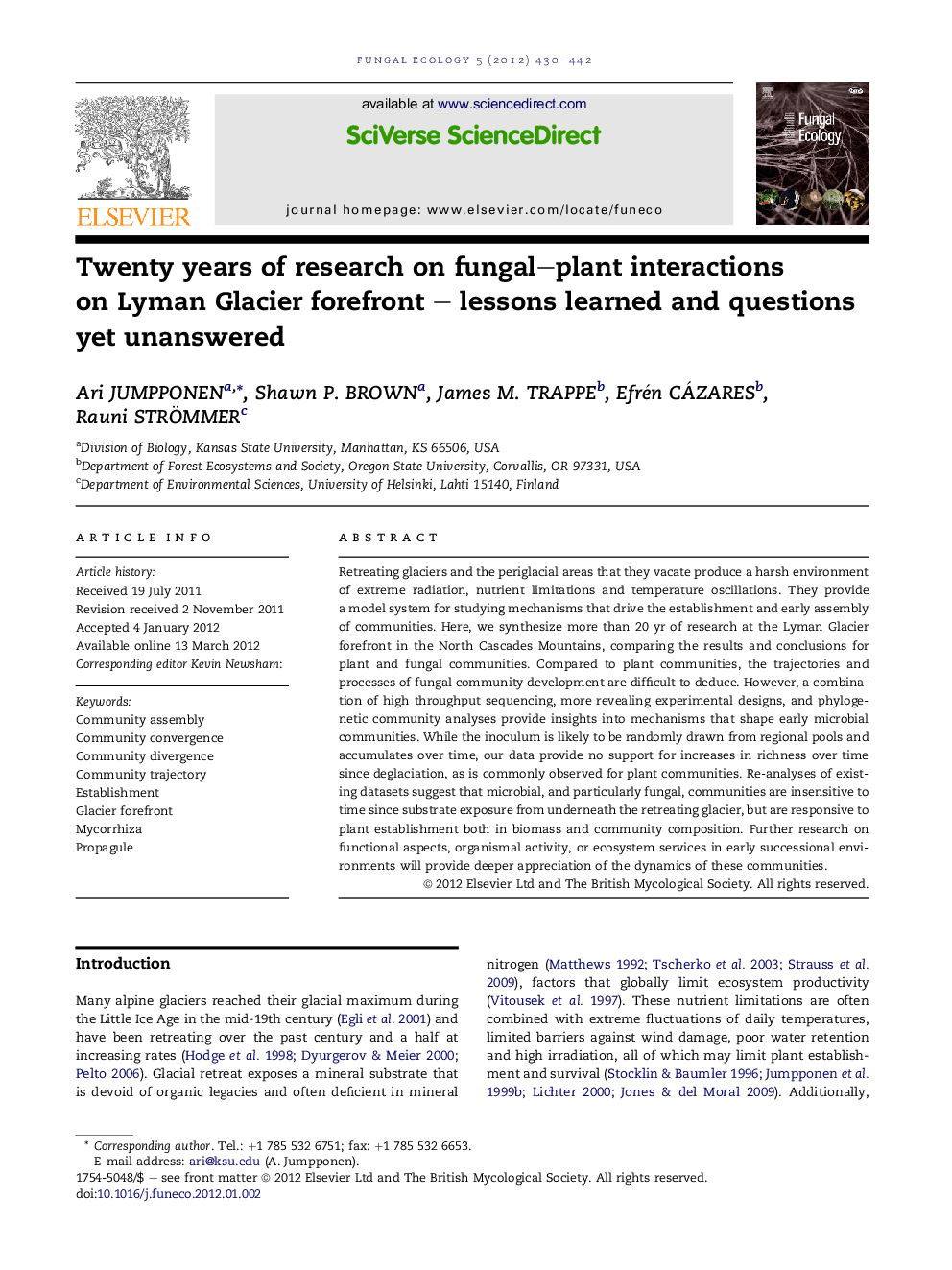| Article ID | Journal | Published Year | Pages | File Type |
|---|---|---|---|---|
| 2054034 | Fungal Ecology | 2012 | 13 Pages |
Retreating glaciers and the periglacial areas that they vacate produce a harsh environment of extreme radiation, nutrient limitations and temperature oscillations. They provide a model system for studying mechanisms that drive the establishment and early assembly of communities. Here, we synthesize more than 20 yr of research at the Lyman Glacier forefront in the North Cascades Mountains, comparing the results and conclusions for plant and fungal communities. Compared to plant communities, the trajectories and processes of fungal community development are difficult to deduce. However, a combination of high throughput sequencing, more revealing experimental designs, and phylogenetic community analyses provide insights into mechanisms that shape early microbial communities. While the inoculum is likely to be randomly drawn from regional pools and accumulates over time, our data provide no support for increases in richness over time since deglaciation, as is commonly observed for plant communities. Re-analyses of existing datasets suggest that microbial, and particularly fungal, communities are insensitive to time since substrate exposure from underneath the retreating glacier, but are responsive to plant establishment both in biomass and community composition. Further research on functional aspects, organismal activity, or ecosystem services in early successional environments will provide deeper appreciation of the dynamics of these communities.
► We present 20 years of community data collected at a receding glacier forefront. ► Plant establishment correlates with phylogenetic clustering of microbial communities. ► Decoupling plant and soil development is necessary to understand fungal communities. ► Controls of microbial community assembly require further study.
